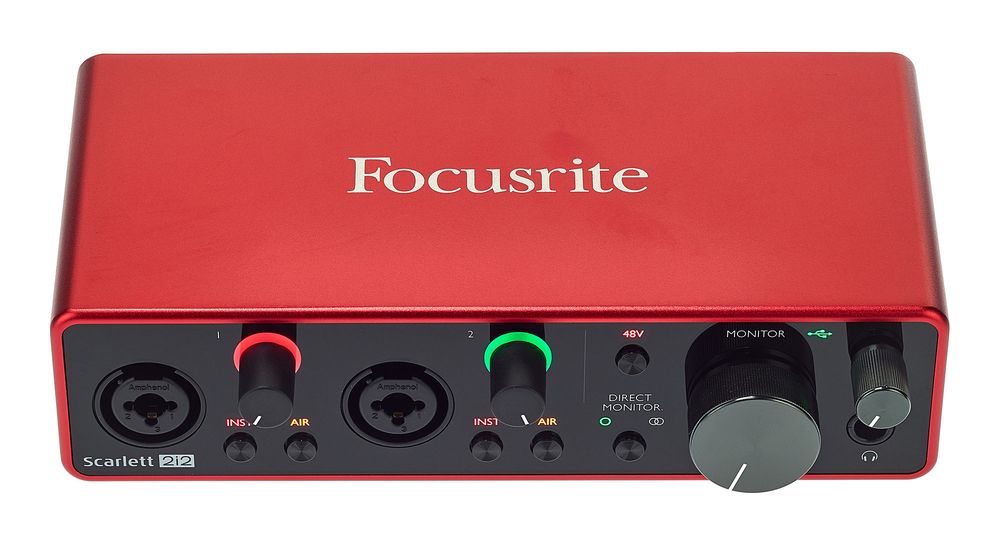5. Audio Interfaces
If you're aiming for higher production standards and top-notch sound results, consider a combination of a professional microphone and an audio interface.
Microphones from the professional recording realm typically don't come with a USB connection. Therefore, the microphone signal needs to be initially amplified, digitized by an A/D converter, and transmitted to the computer running the recording software through an interface. This is where an audio interface comes into play. But what should you look for when choosing one?
In today's market, most audio interfaces designed for podcast enthusiasts come with integrated microphone preamps. These preamps can amplify microphone signals with sufficient quality and negligible noise. When selecting a suitable solution for podcasting, a simple device with just one microphone input might be enough. However, this input should have an XLR socket and switchable phantom power, allowing the use of professional dynamic microphones and condenser microphones alike.
The choice of bus type isn't crucial for podcast enthusiasts. Whether it's USB, Firewire, or one of the numerous PCI variants, as usually only a mono microphone signal is recorded, all these data transmission standards ensure sufficient stability.
For those aiming to create podcasts in top quality with high converter resolution, selecting an audio interface that operates with a professional reference level of +4dBU instead of just -10dBV is advisable. On the other hand, sampling frequency and bit rate are hardly a knockout criterion for current audio interfaces. The built-in converters make more noticeable differences in sound. If you want to take it a step further, this setup can always be complemented by a microphone preamplifier.

Focusrite Scarlett 2i2 3rd Gen


